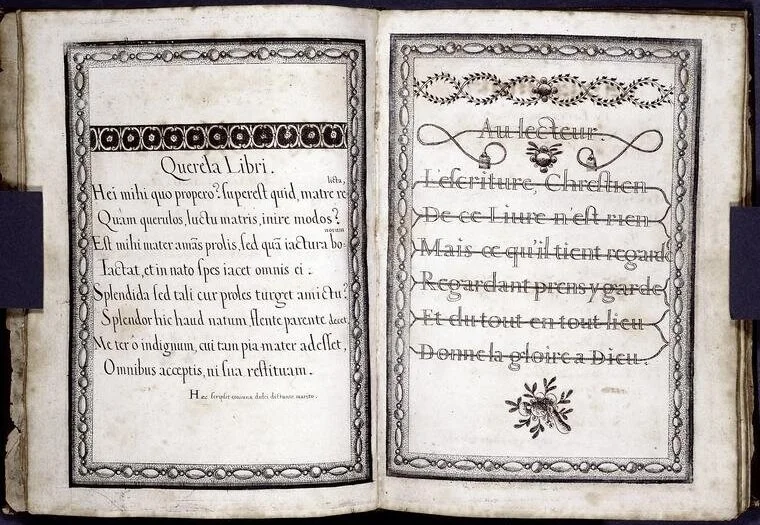The Real Jeanne Baret and Untangling Women Scientists from the Patriarchy
In 1769, Jeanne Baret became the first woman to circumnavigate the globe. It was a journey someone like her was never supposed to make. As a French peasant living in the last vestiges of feudalism, Baret was, statistically, never supposed to travel more than 20 miles from her birthplace.
Baret was an herb woman. By her early twenties, she knew the medicinal uses of hundreds of plants. She knew how to harvest and process these plants and how to turn them into curatives. Her knowledge of plants was far more extensive and far more practical than what was taught even in Europe’s top universities. Baret’s botany knowledge was ancient, passed down from herb woman to herb woman for centuries, if not millennia. And, it was because of this knowledge of the plant world that the naturalist Philibert Commerçon, a wealthy man, a member of the French intelligentsia who ran in circles with Carl Linnaeus, Queen Louisa Ulrika of Sweden, and Voltaire, hired the Baret. She was his teacher, filling in the gaps in his education. The historical record, though, only tells us Baret was his housekeeper.
History has rebranded most of Baret’s accomplishments as Commerçon’s. The only surviving notebook Baret wrote on plant properties is misidentified in Paris’s Muséum National d'Histoire Naturelle as Commerçon’s. The numerous plant specimens Baret collected during her circumnavigation of the globe are attributed to Commerçon, even though he was often so sick he couldn’t have walked to collect them. Commerçon has more than 70 plants named after him, and even one dolphin. Only one plant, Solanum baretiae, is named for Baret, a recognition that only came recently after the publishing of Baret’s biography. The only reason history remembers Baret at all is because her life intersected with Commerçon’s.
Color portrait of Jeanne Baret, dressed like a male sailor, 1817. Wikimedia Commons | Public Domain
Although there are large gaps in Baret’s story, we know she was born on the 27th of July in 1740, and that Commerçon hired her as both housekeeper and botanical assistant by spring 1764. We know Commerçon and Baret lived together in Paris, and had a son together that Baret gave up to Paris’s Hôpital des Enfants-Trouvés. We know she disguised herself as a man to join Louis Antoine de Bougainville’s exploratory expedition around the world as Commerçon’s assistant. During the voyage, we know she did much of the specimen collecting because Commerçon struggled to walk and was “in danger of losing [his] leg… to gangrene” as he wrote in a letter. We know crewmembers assaulted her and likely raped her on New Ireland, part of Papua New Guinea. This was nearly two years into the circumnavigation after which both Commerçon and Baret remained behind on Mauritius, a small French-controlled island in the Indian Ocean.
Commerçon died on the small French-controlled Mauritius on March 13, 1773. Baret’s story thereafter is only told in the scattering of official records she left behind. Without Commerçon, Baret would have had few options. Their home in Mauritius was impounded, likely making her homeless for a time. She was fined for selling alcohol on the Sabbath, and so had probably found work as a barmaid. Records show she remarried a soldier named Jean Dubernat on May 17, 1774. Sometime in late 1774 or early 1775 she returned to France with Dubernat and requested what Commerçon left her in his will. She was granted a small pension by the French Minister of Marine and died on August 5, 1807, at the age of 67.
Oftentimes the presence of those fragments alone becomes grounds on which to dismiss women’s histories.
That is, until Glynis Ridley’s 2010 biography on Baret was widely praised, but still was criticized by some for the speculations she made around Baret’s life. But, when it comes to the history of female scientists, we often do not have much choice but to speculate. How can we tell Baret’s story when there are such holes? Is there enough evidence to justify telling it in the first place?
Ridley’s book certainly is not the first female biography to come under fire. In fact, there's a whole genre of books known as “speculative biographies.” Central Queensland University Professor Donna Lee Brien, co-editor of the book “Recovering History Through Fact and Fiction: Forgotten Lives,” defines the genre as “non-fiction biographies” where authors base “subjective conjecture, empathy and imaginings on the documented facts.”
When I asked Ridley specifically about the criticism, she pointed out, “I’m very careful in the book to say ‘might’ or ‘probably’ or ‘possibly’ rather than this is a fact. But actually, nothing hangs on whether you accept that as true or not true … We know the broad outlines [of Baret’s life] are verifiable.” Her biography does not rest on speculation.
And yet, speculation is at the core of many biographies about canonical (male) figures. “I’m struck by the deep irony of a canonical figure like William Shakespeare,” Ridley says. “What we actually know about Shakespeare and can document is not very much. And yet, biographies of Shakespeare don’t tend to come under a lot of criticism.”
When I asked her why she thinks that is, Ridley made some speculations of her own. “I think that certain figures lead to the production of a ‘certain critical mass,’ in terms of the number of biographies [written about them],” she explains. “Right from the 18th century onwards, you’ve got biographies of Shakespeare, and, at a certain point, certain things are accepted as fact. [But, if you look for evidence for those ‘facts’], you end up going down a rabbit hole where something in biography C actually has its roots in biography B, actually has its roots in biography A. Sometimes you find that when there are enough biographies about a figure, they start quoting each other.”
A biography becomes part of this “self-perpetuating myth” that in turn becomes accepted as factual history. We create history and facts where we want them to be. We want to know who Shakespeare was, so we infer. And, after enough people make the same inferences (citing each other as they do so), the fiction becomes fact. But Ridley says that when it comes to “writing the history of female figures, especially lesser-known female figures [like Baret], then you don’t have that critical mass where biographies are reinforcing each other.” So, critics end up denouncing Ridley’s biography as unfounded.
“If we truly want to uncover history’s overlooked figures, we have to become more comfortable with the gaps in history—to acknowledge that there is always going to be some level of guesswork when telling the story of the past.”
For the Wall Street Journal, Ridley’s greatest infraction was her assumption of Baret’s rape on New Ireland. WSJ reviewer Gerard Helferich implies Ridley’s “provocative strategy” of including the rape scene is “deliberate.” For Helferich, the scene is an attempt to ramp up into a narrative climax.
For Ridley, the only logical conclusion to make when considering all the evidence is that crewmembers raped Baret. She told me, “If readers want to be critical of me saying I think she was gang-raped, then I would like those critics to decide how far they want to go [with their assumption Baret was not raped].”
“We want our unconventional heroes and heroines, but we want their lives to be neat and tidy and not the messy, complicated thing that lives often are,” Ridley explains. We want the life of the first woman who circumnavigated the globe not to be marred by a brutal rape from the very crewmembers she was onboard with. We want our history to be all facts without any speculations, but that is, in essence, a way to keep women out of history.
But as Ridley points out, that is starting to change. “I think we’re at a really interesting point … It feels like the start of something where more people are thinking about … how to bring more of these individuals forward. You know, people previously overlooked either because of gender or because of race. I think there’s lots more yet to be discovered.” Indeed, Ridley’s next book, “Dangerous Women,” considers some of those previously overlooked women.
In telling the stories of those who have been excluded, we create a larger “critical mass.” There will be more biographies, more histories written in the years to come to record and celebrate the stories of those who have been overlooked. But that is not always a perfect solution. More biographies can sometimes lead to self-perpetuating myths. If we truly want to uncover history’s overlooked figures, we have to become more comfortable with the gaps in history—to acknowledge that there is always going to be some level of guesswork when telling the story of the past. Perhaps only then will we succeed in telling a more egalitarian and, therefore, truer history.
Image credit: Photo of Bougainvillea flowers and leaves, possibly discovered by Baret and credited to Commerson, 2009, Sridhar Rao (Wikimedia Commons | CC BY-SA 4.0)







